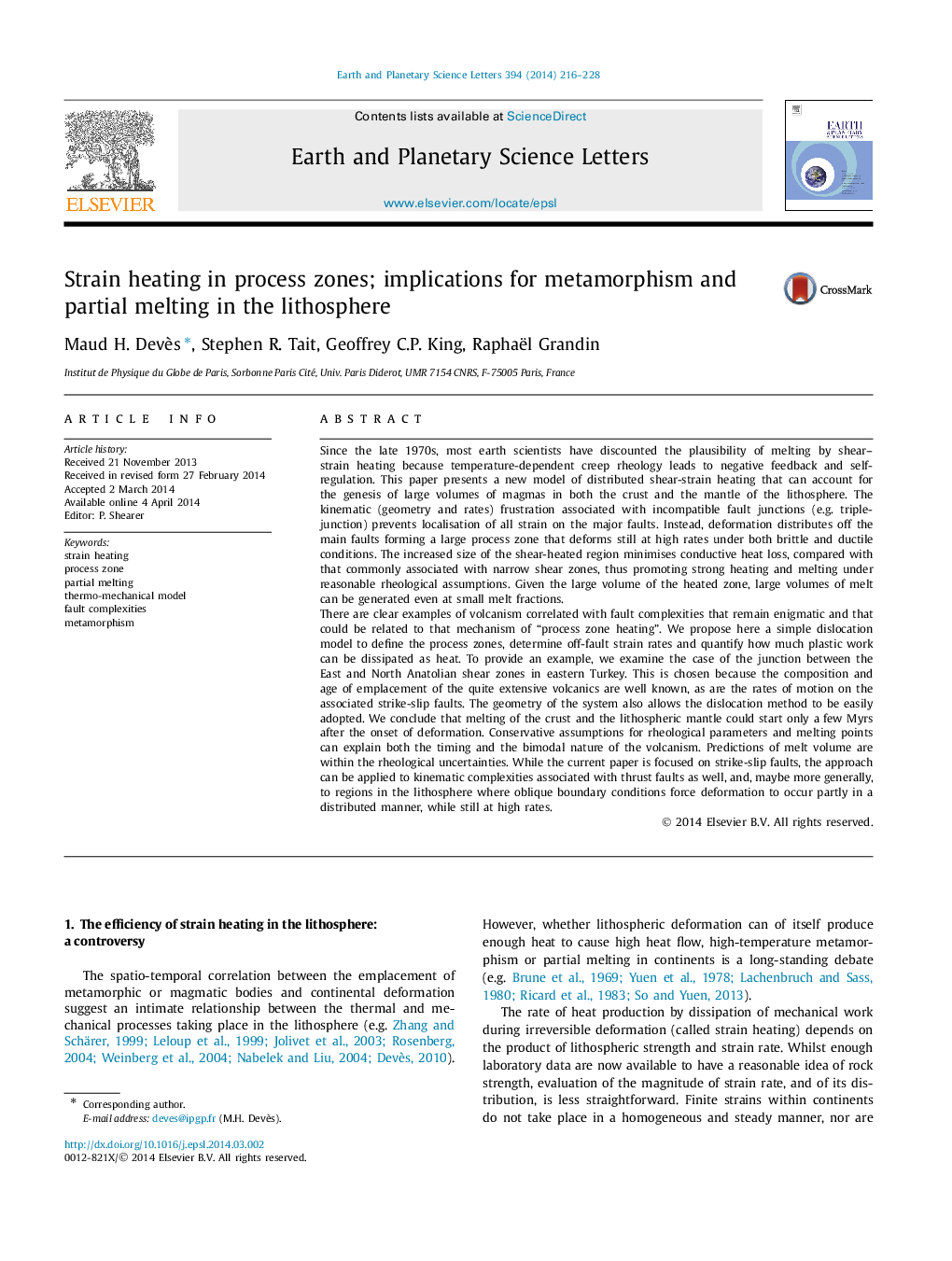| کد مقاله | کد نشریه | سال انتشار | مقاله انگلیسی | نسخه تمام متن |
|---|---|---|---|---|
| 6429415 | 1634762 | 2014 | 13 صفحه PDF | دانلود رایگان |
- Kinematic incompatibility results in process zones of distributed deformation.
- Strain heating in process zones is more efficient than in narrow shear zones.
- This alternative partial melting mechanism is specific to the lithosphere.
- It explains the bimodality, location, volumes and timing of Karliova volcanism.
- It should apply at wider scale in various geodynamic contexts.
Since the late 1970s, most earth scientists have discounted the plausibility of melting by shear-strain heating because temperature-dependent creep rheology leads to negative feedback and self-regulation. This paper presents a new model of distributed shear-strain heating that can account for the genesis of large volumes of magmas in both the crust and the mantle of the lithosphere. The kinematic (geometry and rates) frustration associated with incompatible fault junctions (e.g. triple-junction) prevents localisation of all strain on the major faults. Instead, deformation distributes off the main faults forming a large process zone that deforms still at high rates under both brittle and ductile conditions. The increased size of the shear-heated region minimises conductive heat loss, compared with that commonly associated with narrow shear zones, thus promoting strong heating and melting under reasonable rheological assumptions. Given the large volume of the heated zone, large volumes of melt can be generated even at small melt fractions.There are clear examples of volcanism correlated with fault complexities that remain enigmatic and that could be related to that mechanism of “process zone heating”. We propose here a simple dislocation model to define the process zones, determine off-fault strain rates and quantify how much plastic work can be dissipated as heat. To provide an example, we examine the case of the junction between the East and North Anatolian shear zones in eastern Turkey. This is chosen because the composition and age of emplacement of the quite extensive volcanics are well known, as are the rates of motion on the associated strike-slip faults. The geometry of the system also allows the dislocation method to be easily adopted. We conclude that melting of the crust and the lithospheric mantle could start only a few Myrs after the onset of deformation. Conservative assumptions for rheological parameters and melting points can explain both the timing and the bimodal nature of the volcanism. Predictions of melt volume are within the rheological uncertainties. While the current paper is focused on strike-slip faults, the approach can be applied to kinematic complexities associated with thrust faults as well, and, maybe more generally, to regions in the lithosphere where oblique boundary conditions force deformation to occur partly in a distributed manner, while still at high rates.
Journal: Earth and Planetary Science Letters - Volume 394, 15 May 2014, Pages 216-228
